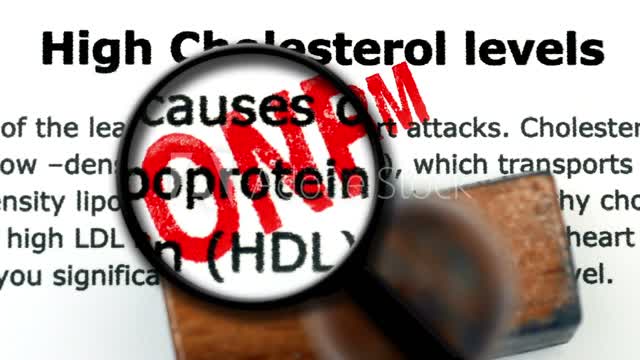Premium Only Content

High Cholesterol: Sign To Not Ignore While Walking; May Require Immediate Treatment
http://ceesty.com/edFYuM
TIMESOFINDIA.COM | Last updated on - Sep 1, 2022, 14:56 IST
Signs your cholesterol levels are high
High cholesterol is often caused by poor lifestyle choices, such as eating a high-fat diet, lack of exercise, smoking and drinking too much alcohol. These lifestyle habits can take a toll on your heart health. Sometimes high cholesterol may show up in no signs whatsoever, and can silently build up in your arteries.
These deposits can reduce blood flow through your arteries, which can cause multiple health issues like chest pain, heart disease, strokes etc. Timely identification of signs of high cholesterol is important and your legs might hold clues.
Types of cholesterol
There are two types of cholesterol, based on what the lipoprotein (they carry cholesterol through your bloodstream to the cells) carries:
Low-density lipoprotein (LDL) - It is known as the "bad" cholesterol, as it transports cholesterol particles throughout your body. This bad cholesterol then builds up in the walls of your arteries, making them hard and narrow, thus putting pressure on your heart.
High-density lipoprotein (HDL) - This is actually the "good" cholesterol, as it picks up excess cholesterol and takes it back to your liver.
What is peripheral artery disease?
High levels of bad cholesterol promotes plaque build-up in your arteries. Plaque is a waxy material made up of cholesterol and other substances. Too much plaque can make your arteries narrow and reduce the blood flow. The buildup of fatty plaque in the arteries is called atherosclerosis.
This restricted blood flow can appear through warning signs in your legs. This can result in peripheral arterial disease (PAD) in the legs or lower extremities. PAD can happen in any blood vessel, however, it is more common in the legs.
Pain while walking
The peripheral arterial disease can trigger pain in your legs, especially when you walk. The pain can range from mild to severe, and can suddenly appear like an ache on standing and walking. It usually goes away a few minutes after resting your legs.
Both legs can be affected at the same time due to poor blood circulation from the heart to the legs, although the pain could be worse in one leg.
Read more: Breakfast recipes to treat bloating
Other symptoms of PAD
Apart from pain in your leg, signs of peripheral arterial disease can also be seen as:
Loss of hair from your legs and feet
Numbness or weakness in your legs
Brittle and slow-growing toenails
Ulcers on your feet and legs which do not heal
Colour of legs turning pale or blue
The muscles in your legs are shrinking
High cholesterol and diabetic neuropathy
Nerve damage due to diabetes can make you lose feeling in your feet. Apart from elevated blood sugar levels, your cholesterol levels can also contribute to diabetic nerve damage. High levels of LDL and/or low levels of HDL can combine with sugars in your blood to change your cell’s behaviour.
In this condition, there is hardly any sensation in the feet, due to which you may not notice wounds on your feet which can further develop into ulcers.
About us https://bit.ly/3GUPFOa
Contact us +919942258153 kvk.subadhra@gmail.com
https://9af925064f65p3c6ti2jfw6n1n.hop.clickbank.net
-
 11:41
11:41
BobandBrad
2 years agoImmediate Relief & Self Treatment of Sacroiliac Joint
1344 -
 39:47
39:47
Brewzle
1 day agoPennsylvania Wouldn’t Let Me Film…So I Went Bourbon Hunting in NY
26.9K7 -
 10:12
10:12
Space Ice
22 hours agoBallistic: Ecks vs Sever - Underrated Masterpiece Or Incoherent Mess?
9.09K9 -
 2:43:07
2:43:07
RG_GerkClan
5 hours agoLIVE: Lets Get to 500 FOLLOWS! - Escape From Tarkov - Gerk Clan
22.9K3 -
 LIVE
LIVE
Vigilant News Network
19 hours agoHillary Clinton EXPOSED In Another Massive Hoax | The Daily Dose
1,778 watching -
 1:00:17
1:00:17
Trumpet Daily
1 day ago $5.65 earnedRINOs Are Trump’s Biggest Enemy Now - Trumpet Daily | Nov. 22, 2024
12.4K19 -
 17:47
17:47
RealReaper
14 hours ago $0.19 earnedGladiator 2 Another Pointless Sequel
7K2 -
 45:45
45:45
PMG
12 hours ago"Hannah Faulkner and Stephanie Nash | No Farms No Food"
5.78K -
 27:11
27:11
Degenerate Plays
1 day ago $0.12 earnedReturn Of The Online Girlfriends - Stellar Blade : Part 30
2.18K -
 7:16
7:16
SeasonofMist
2 days agoSOLSTAFIR - Fjara (Official Music Video)
1.71K2